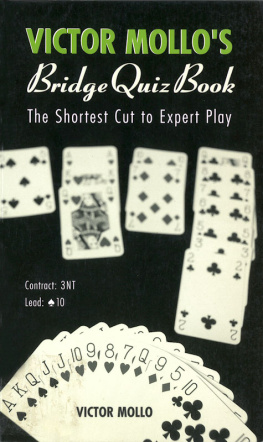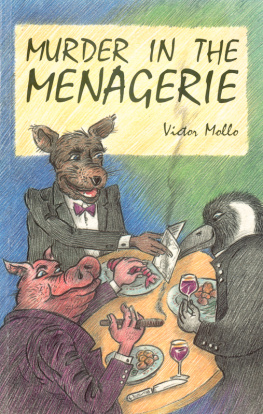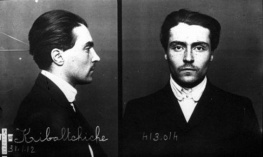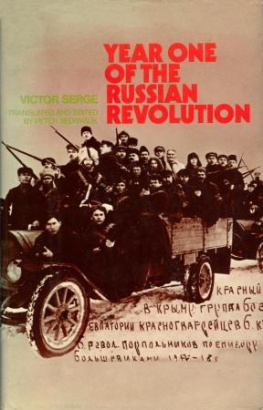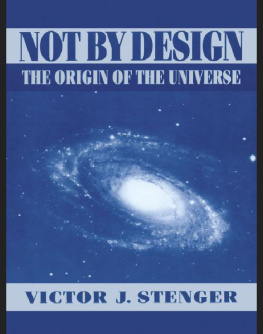Victor Mollos
Bridge Quizbook
Victor Mollos
Bridge Quizbook
Victor Mollo
A Reissue of the Classic
Victor Mollos Winning Double
Batsford
First published in 1968 as Victor Mollos Winning Double
by Faber and Faber Limited
First published in the United Kingdom as an eBook in 2014 by
Batsford
1 Gower Street
London WC1E 6HD
An imprint of Pavilion Books Company Limited
www.batsford.com
Copyright Batsford 2014
Text Victor Mollo 1968, 1973
eBook ISBN: 978-184994-218-8
Authors Preface
The dictum that you cannot have your cake and eat it, too, has always struck me as sheer defeatism. Of course you can and I invite the reader to do it with me in the pages which follow. For this is a textbook and a quiz-book in one, and sets out to exploit the advantages of both without incurring the disabilities of eitherin short, to gain on the swings as well as on the roundabouts.
A textbook is admittedly the best medium for passing on to the reader the keys to correct card play. But who will tell him how, and above all when, each key should be turned in the appropriate lock? This is where the quiz comes into its own, quickening the readers powers of perception and alerting him against the dangers of doing the right thingat the wrong time.
As in medicine, so in bridge, the diagnosis should precede the cure. Not so in textbooks, where, by the nature of things, the logical sequence is often reversed. At the card table the player must identify each problem as it arises. Then only can he set out to solve it. The textbook tells him what it is before he even sees his hand. A glance at the chapter heading and he knows whether he is expected to execute a safety-play or an end-play, a savant squeeze or a subtle piece of deception. He is taught the correct treatment and is expected to develop the appropriate complaint all on his own.
Here the quiz method scores every time. With the spotlight fixed on RECOGNITION, the diagnosis comes first, where it belongs. No chapter headings guide the reader. No rules of continuity hamper the author. He is free to plan confusion scientifically, so as to put before the reader a series of seemingly unrelated situations, just as they are apt to come up at the card table.
The quiz has many advantages, but, of course, the correct diagnosis will not save the patient unless he pursues the right treatment afterwards. The one must come before the other, but both are indispensable. The question arises: can the secrets of recognition and the mechanics of card play be communicated simultaneously?
The reader will judge for himself. I invite him to join me in seeking the answers to a hundred and fifty questions and I predict that by the time he reaches the last one he will have proof-positive that his card play has improved appreciably. Whats more, he will know exactly by how much it has improved. For built into these pages is a yardstick to measure his progress, and this brings us to the design behind these quizzes.
A PREVIEW
The hundred and fifty quizzes are divided into three equal parts. The first fifty are easier than the others; but all range over the entire field of card play and, though every stratagem finds a place, the focus is always on the everyday situations, which call for more horse-sense than science.
Quizzes 51 to 150 are divided into two parts with marks awarded for the correct answers. Most of the quizzes earn 5 points each, but some are more difficult than others and then the bonus rises to 8 points or to 10. The total for each of the last two parts is 295, but I hope that no reader will be so selfish as to reach the summit. After all, if he knows the right answers already, I must have put the wrong questions and what author could admit a thing like that? But no matter how well or badly the reader fares, I defy him not to do much better as he reads on.
A CHALLENGE
Whatever he scores for his first fifty quizzes, he will return a higher score for his next fifty. This is both a prophecy and a challenge, for the reader will not be able to help himself. And since the result is a foregone conclusion, I am willing, like every true sportsman, to bet on it heavily.
Will some suspicious reader refuse to bet on the pretext that its too easy for me to fix the race before the start? Why, he may say, all the author need to do to win his bet is to make the hands in Part III easier than those in Part II. He cannot lose.
If this distrustful reader will double the stakes I will undertake to show him at once how unworthy are his suspicions. Done? Very well. Let him tackle Part III before Part II. He will now return a better score for quizzes 51 to 100 than for the next fifty, and apart from the trifling inconvenience of turning over the pages in an unusual sequence, it will make no difference.
The quizzes are set out in groups, usually three, four or five on each page. Then, overleaf, come the answers. This arrangement lacks uniformity, but spares the reader from having to refer, hand after hand, to the back of the book. Alternatively, it preserves him from the temptation of peeping surreptitiously at the answers across the page. If his willpower is equal to it, he will do best to complete his own answers for each group before turning the page to study the analysis and mark his score.
So much for the procedure. One thing more remains to be said about the substance. The sophisticated reader may dismiss one or two of the first fifty quizzes as too easy. The less advanced may find some in the next hundred too difficult. That is as it should be for at the card table the same hand, posing two or more problems, may be both easy and difficult. The winning player does not always solve the latter, but he is rarely careless over the former. He wins not because he is brilliant, but because he avoids mistakes, especially childish mistakes. For winning is a technique on its own and its prime exponents are not the players who execute clever and complex coups, but those who bring home, hand after hand, the everyday contracts that are easy to makeand sometimes easier still to lose. And since more contracts are lost in the first thirty seconds that at any other time, most of the questions bear on the first two or three tricks. In short, the quizzes have been selected and arranged to reproduce as nearly as possible the conditions which prevail at the card table.
The last ten quizzes, a feature new to this edition, take the process a stage further and bring the reader hands from actual play. Each one is presented as a quiz, exactly like the others, but this time there are no marks and no awards. Instead, world champions demonstrate in practice the plays which the reader has learned in theory. Having grasped the mechanics of this or that stratagem, he can see its execution by a master, performing against other masters, on the world stage. One day the reader of these pages may move before the footlights to join them. Meanwhile Quiz 1 awaits him.
Part One
At times, opponents selfishly enter the bidding, making it harder for us to reach the right contract. In return, they raise a little the veil which hides their holdings. For every bid carries a message and the skilful declarer makes use of all the information which comes his way.
The reader can assume that every bid and every sequence in these pages is simple and straightforward. He need pay no heed to systems or conventions and he can expect every opening no trump to be of the weak variety, 12 to 14 points.
In defence, as in bidding, opponents follow strictly standard methods. They play the king from A K, and though they do not promise to lead invariably the fourth highest of their longest suits or not to false card, the defence is always honest. No fiendish traps await the declarer, either in the first fifty hands or in the more sophisticated ones which follow.
Next page
